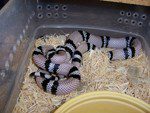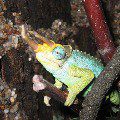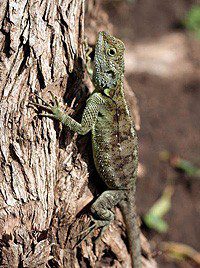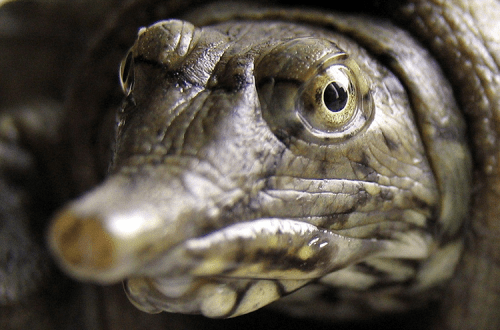
Milk snake
The most colorful snake of the genus Lampropeltis is the milk snake (Lampropeltis triangulum). Its range significantly exceeds the ranges of other snakes of this genus and extends for 5800 kilometers from north to south: from Quebec in Canada, through the eastern and central parts of America, the Florida peninsula, Texas, Mexico, the countries of Central America to Colombia, Ecuador and Venezuela in South America. 25 subspecies of L.triangulum inhabit this territory, which differ not only in color, but also in the sizes they achieve (from 40 centimeters in Lt elapsoides, Ltsispila from the southeast USA to two meters in Lthondurensis from Central and Ltmicropholis from South America). Throughout their range, milk snakes are somehow tied to mountainous terrain, in some areas they can rise to 3500 meters above sea level.
Contents
Variety of species
Кольчатая (Lampropeltis triangulum annulata);
Lampropeltis triangulum hondurensis;
Sinaloiskaya (Lampropeltis triangulum sinaloae);
Peacock (Lampropeltis triangulum cembelia);
Андская (Lampropeltis triangulum andesiana);
Western Mexican (Lampropeltis triangulum arcifera);
Conanta (Lampropeltis triangle conanti);
Нельсона (Lampropeltis triangulum nelsoni);
Pacific (Lampropeltis triangulum oligozona);
Stuart (Lampropeltis triangulus stuarti);
Рыжая (Lampropeltis triangulus syspila);
Ruthven (Lampropeltis ruthveni), etc.
Description
 Of the snakes bred in terrariums, the milk snake is one of the most beautiful. The combination of rich shades of red, black, white colors makes them visible from afar and among the stones, and in the thick grass, and in the branches of shrubs. And although in the language of wildlife, such a color means a warning of danger, in the case of milk snakes, we are only talking about imitation of a coral asp – a really very poisonous snake. In fact, milk snakes are harmless – you can safely pick them up.
Of the snakes bred in terrariums, the milk snake is one of the most beautiful. The combination of rich shades of red, black, white colors makes them visible from afar and among the stones, and in the thick grass, and in the branches of shrubs. And although in the language of wildlife, such a color means a warning of danger, in the case of milk snakes, we are only talking about imitation of a coral asp – a really very poisonous snake. In fact, milk snakes are harmless – you can safely pick them up.
The size of the milk snake is relatively small – up to 1 meters.
These snakes are very secretive, mostly nocturnal, spend a lot of time in the water.
Inhabitation
The range of its habitat far exceeds the ranges of other snakes of the genus Lampropeltis. It extends for 5800 km. from North to South. From Canada (Quebec), through the central and eastern parts of the USA, Florida, Texas, Mexico, the countries of Central America, up to Colombia, Venezuela and Ecuador. Throughout their habitat, these snakes, one way or another, are tied to mountainous terrain, rising to a mark of 3500 meters above sea level in some places.
Food
The snake willingly eats mice, hamsters, rats, lizards and chicks. Sometimes frogs, although this is most likely an exception. Hunting takes place at night, so after planting a forage animal, it is necessary to turn off the light. It is also necessary to give mineral and vitamin supplements, especially to young growing individuals. In food, they are moderate and never overeat. For a week, as a rule, no more than 2-3 food objects will be required.
Reproduction
 Maturity occurs at about 2 years of age.
Maturity occurs at about 2 years of age.
In preparation for breeding, it will be necessary to diversify the snake’s diet, use newborn rats more often – almost the most complete food for snakes.
Pregnancy in a milk snake lasts from 48 to 70 days, depending on the conditions of detention. Toward the end of the term, the female stops eating. The clutch usually contains 4-8 eggs. The hatched snakes are quite large – about 25-27 cm long. The ideal initial food is newborn mice. Growth increases quite quickly, and by seven months their length doubles. By the year, some individuals can reach a meter in length.
Content
This snake does not require a large terrarium; for most species, an option with an area of u0bu3babout 75 sq.m is suitable. It should be Terrarium should be equipped with shelters and a spacious bathing room, which will be located in a dark place. The space can be planted, which will increase the humidity and give the terrarium an exotic look. Aroid and bromeliad plants are suitable for planting. You can use dry branches and snags as decorations. The optimum humidity should be 25%. Hygroscopic substrates are best used as soil. Sphagnum moss will do. The required temperature of the content is 35-22 ° C during the day and about XNUMX ° C at night.
Additionally
The milk snake got its name because of a myth common among the locals: that it is able to milk cows in the pasture.
Thank you projects
http://aquatek.narod.ru
http://www.terrariy.ru
http://www.zoodrug.ru
http://www.zoopodolsk.ru
http://www.terraria.ru
http://www.zoospravka.ru





